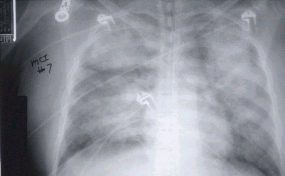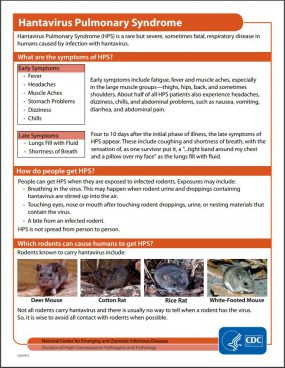Hantavirus Pulmonary Syndrome (HPS)
Hantavirus Pulmonary Syndrome (HPS) is a severe, sometimes fatal, respiratory disease in humans caused by infection with hantaviruses.
Anyone who comes into contact with rodents that carry hantaviruses is at risk of HPS. Rodent infestation in and around the home remains the primary risk for hantavirus exposure. Even healthy individuals are at risk for HPS infection if exposed to the virus.
To date, no cases of HPS have been reported in the United States in which the virus was transmitted from one person to another. In fact, in a study of health care workers who were exposed to either patients or specimens infected with related types of hantaviruses (which cause a different disease in humans), none of the workers showed evidence of infection or illness.
In Chile and Argentina, rare cases of person-to-person transmission have occurred among close contacts of a person who was ill with a type of hantavirus called Andes virus.
Tracking a Mystery Disease: The Detailed Story of Hantavirus Pulmonary Syndrome

In May 1993, an outbreak of an unexplained pulmonary illness occurred in the southwestern United States, in an area shared by Arizona, New Mexico, Colorado and Utah known as “The Four Corners”. A young, physically fit Navajo man suffering from shortness of breath was rushed to a hospital in New Mexico and died very rapidly.

Severe HPS. Image courtesy D. Loren Ketai, M.D.
Andes virus is a type of hantavirus that is found in rodents in South America. People can become ill with Andes virus if they come in contact with infected rodents or their droppings while in South America.
